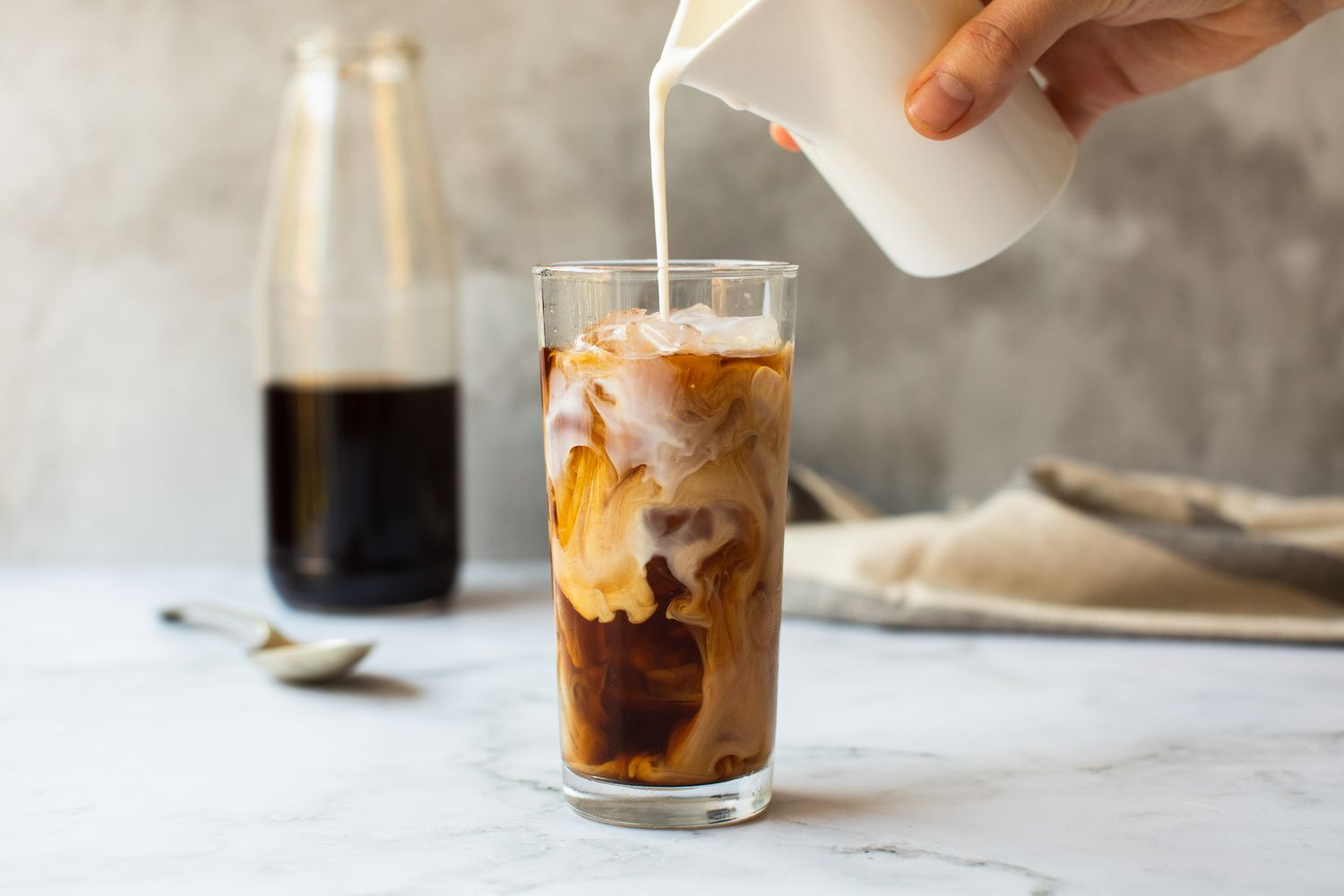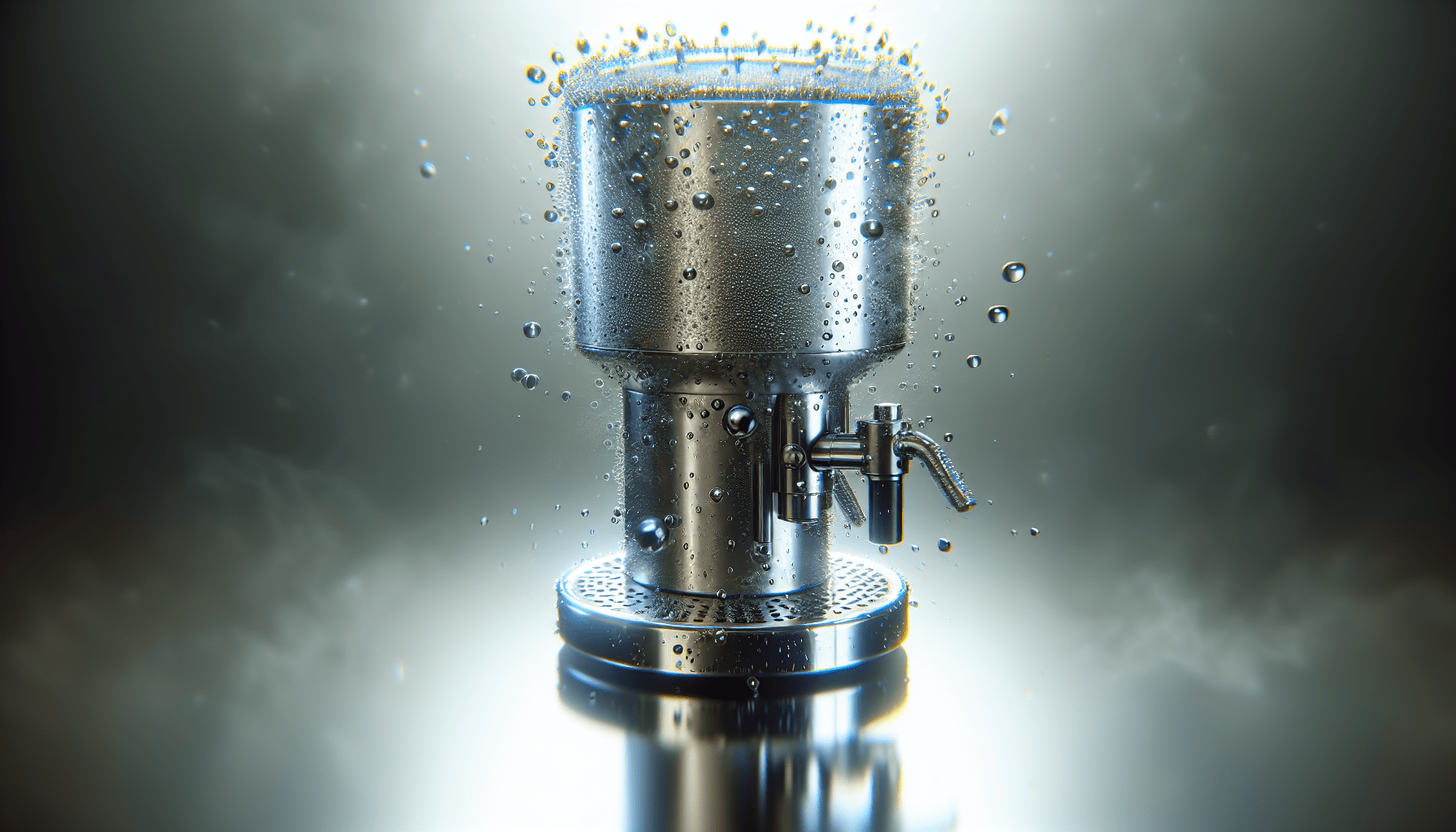Thinking of making some delicious cold brew coffee at home? Then you might be wondering – how much coffee grounds do you actually need for a cold brew maker? Don’t worry, we’ve got you covered! In this article, we’ll explore the perfect ratio of coffee to water for your cold brew, ensuring you end up with a rich and flavorful beverage every time. So, get ready to discover the secret behind brewing the best cold brew coffee at home and elevate your coffee game to a whole new level!
Understanding Cold Brew Coffee
What is cold brew coffee?
Cold brew coffee is a unique brewing method that involves steeping coffee grounds in cold or room temperature water for an extended period of time, usually around 12-24 hours. Unlike traditional hot brewed coffee, cold brew coffee is never exposed to heat, resulting in a smoother, less acidic flavor profile.
How is it different from regular coffee?
The main difference between cold brew coffee and regular coffee lies in the brewing process. Regular coffee is typically brewed using hot water and takes just a few minutes to prepare, whereas cold brew coffee requires a longer steeping time with cold or room temperature water. This difference in brewing method affects the taste and acidity of the final product.
Why is it gaining popularity?
Cold brew coffee has gained popularity in recent years for several reasons. Firstly, the slow brewing process of cold brew coffee helps to extract a smoother, less acidic flavor from the coffee grounds. This makes it a favorite among people who find regular coffee too bitter or harsh on their stomachs. Additionally, cold brew coffee is highly customizable and versatile, allowing for a wide range of flavor variations and the addition of milk, cream, or sweeteners. Lastly, as a cold beverage, it is a refreshing alternative to hot coffee, especially during warmer months.
Benefits of Using a Cold Brew Maker
Smooth and less acidic flavor
One of the key benefits of using a cold brew maker is the ability to achieve a smoother and less acidic flavor in your coffee. The cold brewing process helps to extract the coffee’s natural sweetness while minimizing the bitterness and acidity that can be present in hot brewed coffee. This makes cold brew coffee a more enjoyable and gentle option for those with sensitive stomachs or who simply prefer a milder flavor profile.
Simple and convenient process
Using a cold brew maker simplifies the cold brew coffee-making process. With a cold brew maker, you can easily measure and add your coffee grounds and water to the designated compartments, making it a hassle-free experience. The cold brew maker then does the work of steeping the coffee for the recommended time, ensuring consistent results every time you brew a batch of cold brew coffee.
Long-lasting and versatile
Cold brew coffee made with a cold brew maker can be stored for several days in the refrigerator without losing its flavor or going stale. This means you can make a larger batch of cold brew coffee and enjoy it throughout the week without the need to brew a fresh cup every day. The versatility of cold brew coffee also allows for endless customization options. You can dilute it with water or milk to your desired strength, add ice cubes for a refreshing cold beverage, or even use it as a base for other coffee-based drinks like iced lattes or cocktails.
Factors to Consider
Size of the cold brew maker
When choosing a cold brew maker, it is important to consider the size. Cold brew makers come in various sizes, ranging from small personal-sized options to larger containers designed for making larger batches. The size you choose should be based on your consumption needs and available storage space. If you drink cold brew coffee regularly or have a household of coffee enthusiasts, a larger cold brew maker may be more suitable. On the other hand, if you only occasionally indulge in cold brew or have limited storage space, a smaller cold brew maker may be sufficient.
Strength preference
Another factor to consider when using a cold brew maker is your preferred strength of cold brew coffee. Some people enjoy a more concentrated and intense flavor, while others prefer a milder and more diluted taste. Cold brew makers can help you achieve your desired strength by allowing you to adjust the coffee-to-water ratio or the steeping time. Consider your personal taste preferences and experiment with different strengths to find your perfect cup of cold brew coffee.
Coffee bean quality
The quality of the coffee beans you use plays a crucial role in the flavor and aroma of your cold brew coffee. Opt for high-quality coffee beans that are freshly roasted and ground. Look for beans that are specifically labeled as suitable for cold brew coffee, as they are often roasted to enhance their flavor when brewed using the cold brew method. Experiment with different coffee bean origins and flavors to discover your favorite combination.
Water-to-coffee ratio
The water-to-coffee ratio is an essential factor in achieving the desired strength and flavor in your cold brew coffee. Most cold brew recipes recommend a ratio of 1:4 or 1:5, meaning 1 part coffee grounds to 4 or 5 parts water. However, this ratio can be adjusted according to your personal preference. If you prefer a stronger flavor, you can increase the amount of coffee grounds or decrease the amount of water. Conversely, if you prefer a milder taste, you can decrease the amount of coffee grounds or increase the amount of water. It is all about finding the balance that suits your taste buds.
Recommended Coffee Grounds Measurement
General guideline
As a general guideline, a good starting point for making cold brew coffee is to use 1 cup (8 ounces) of coarsely ground coffee beans for every 4 cups (32 ounces) of water. This ratio can be adjusted based on your preferences, but it provides a balanced starting point for most cold brew recipes. It is important to note that the volume of water used should be the final volume of brewed coffee you desire, as cold brew coffee is typically consumed as a concentrate that can be diluted with additional water or milk.
Specific recommendations
For a stronger and more concentrated cold brew, you can increase the coffee grounds to water ratio. Using 1 1/2 cups (12 ounces) of coffee grounds for every 4 cups (32 ounces) of water will result in a bolder and more intense flavor. On the other hand, if you prefer a milder tasting cold brew, you can decrease the amount of coffee grounds to 3/4 cup (6 ounces) for every 4 cups (32 ounces) of water. These measurements can be adjusted further to suit your personal taste preferences.
Experimenting with different ratios
One of the joys of making cold brew coffee is the ability to experiment with different ratios and find the flavor that best suits your taste buds. You can try using different coffee-to-water ratios, such as 1:3 or 1:6, to see how it affects the strength and flavor of your cold brew coffee. By keeping track of the ratios and your tasting notes, you can gradually fine-tune the measurements to create your own signature cold brew recipe.
Serving Size and Yield
Determining the serving size
Determining the serving size for your cold brew coffee depends on how much you intend to consume at one time and whether you prefer a stronger or milder taste. If you enjoy a strong and concentrated cold brew, you can start with a smaller serving size, such as 6-8 ounces, and dilute it with water or milk if desired. For a milder taste, you can start with a larger serving size, such as 10-12 ounces. It is best to experiment with different serving sizes to find the right balance for you.
Calculating the coffee grounds required
To calculate the amount of coffee grounds required for your desired serving size, you can use the recommended coffee-to-water ratio as a starting point. For example, if you are aiming for a serving size of 8 ounces and using a 1:4 coffee-to-water ratio, you will need 2 ounces (1/4 cup) of coffee grounds. Similarly, for a serving size of 12 ounces and the same ratio, you will need 3 ounces (3/8 cup) of coffee grounds.
Estimating the final yield
The final yield of cold brew coffee will depend on the amount of water used and the coffee-to-water ratio. By multiplying the serving size by the number of servings, you can estimate the total volume of cold brew coffee produced. For instance, if you are making 4 servings of 8 ounces each, the estimated final yield will be 32 ounces (4 cups). This estimation can help you determine the appropriate vessel or container size to use for brewing and storing your cold brew coffee.
Tips and Tricks for Cold Brew Making
Using coarsely ground coffee
When making cold brew coffee, it is best to use coarsely ground coffee beans. Coarse grounds allow for a slower extraction process and prevent over-extraction, which can lead to a bitter taste. Using a burr grinder or requesting a coarser grind size from your local coffee shop can help achieve the desired coarseness for cold brew coffee. Avoid using finely ground coffee meant for espresso or drip coffee, as it can result in an unpleasant and overly strong cold brew.
Using filtered water
The quality of the water used in cold brew coffee can greatly impact the overall taste and clarity of the brew. Whenever possible, use filtered water to minimize impurities and unwanted flavors. Filtered water helps bring out the natural flavors of the coffee beans and ensures a cleaner and more enjoyable cold brew experience. If filtered water is not readily available, tap water can still be used, but it may affect the overall taste and clarity of the brew.
Allowing enough steeping time
Steeping time is a crucial factor in cold brew coffee making. The recommended steeping time for cold brew coffee is typically around 12-24 hours, depending on personal preference and strength desired. A longer steeping time generally results in a bolder and more flavorful brew, while a shorter steeping time produces a milder taste. Experiment with different steeping times to find the perfect balance of flavors that suits your taste buds.
Storing and enjoying cold brew
Once your cold brew coffee is ready, you can store it in the refrigerator for several days, allowing it to be enjoyed whenever you desire. Cold brew coffee is typically consumed over ice, diluted with water or milk, or even heated if preferred. It is a versatile beverage that can be enjoyed as is or customized to your liking with various additives such as sweeteners, creamers, or flavored syrups. Experiment with different serving methods and enjoy the refreshing and smooth flavors of cold brew coffee.
Common Mistakes to Avoid
Using too little coffee grounds
One common mistake when making cold brew coffee is using too little coffee grounds. Insufficient coffee grounds can result in a weak and under-extracted brew, lacking in flavor and intensity. To avoid this mistake, make sure to follow the recommended coffee-to-water ratio or adjust it according to your taste preferences. Adding a bit more coffee grounds can often result in a more balanced and satisfying cold brew.
Using too much coffee grounds
While it may be tempting to increase the amount of coffee grounds to achieve a stronger flavor, using too much can lead to an overpowering and bitter taste. The excess coffee grounds may over-extract, releasing unwanted bitterness into the brew. It is important to find the right balance between the coffee grounds and water to avoid an unpleasant drinking experience. Experiment with different ratios to find your preferred strength without crossing the line into bitter territory.
Steeping for too long or too short
The steeping time for cold brew coffee is an important factor in determining the flavor and strength of the brew. Steeping for too long can result in an overly strong and bitter taste, while steeping for too short a time may produce a weak and underdeveloped brew. It is recommended to follow the recommended steeping time and adjust it according to your taste preferences. Keep track of the steeping time with each batch to ensure consistent and satisfactory results.
Not experimenting with ratios
Cold brew coffee offers a world of possibilities when it comes to flavor and strength. Not experimenting with different ratios can limit your experience and prevent you from finding your perfect cup. Be open to trying different coffee-to-water ratios, adjusting the amount of coffee grounds and water to suit your taste preferences. Keep notes of the ratios you enjoy and continue to refine your cold brew recipe until it matches your personal taste preferences.
Adjusting the Coffee-to-Water Ratio
Increasing or decreasing strength
The coffee-to-water ratio is a key factor in adjusting the strength of your cold brew coffee. To increase the strength, you can add more coffee grounds while maintaining the same amount of water. This will result in a more concentrated brew. Conversely, to decrease the strength, you can decrease the amount of coffee grounds while keeping the water quantity the same. It is all about finding the balance that suits your taste preferences.
Maintaining consistency
Consistency is important when adjusting the coffee-to-water ratio. Once you find a ratio that you enjoy, it is best to stick with it to maintain consistent results. This allows you to replicate the flavor profile that you enjoy each time you make cold brew coffee. Experimenting with different ratios is encouraged, but once you find your preferred strength, consistency will help you enjoy your favorite cup of cold brew every time.
Adapting to personal preferences
One of the great things about making cold brew coffee is its adaptability to personal preferences. Adjusting the coffee-to-water ratio allows you to tailor the brew to your specific taste preferences. Some enjoy a stronger and more robust flavor, while others prefer a milder and smoother taste. By tweaking the ratio, you can create a blend that aligns with your personal preference, ensuring a satisfying cup of cold brew coffee every time.
Additional Factors to Consider
Roast level of the coffee beans
The roast level of the coffee beans used for cold brew can also influence the flavor of the final beverage. Lighter roasts tend to have a brighter and fruitier flavor, while darker roasts offer more robust and caramelized notes. Experimenting with different roast levels can add complexity and depth to your cold brew coffee experience. Explore the wide range of coffee beans available, from light to dark roasts, and discover the unique flavor profiles they can bring to your cold brew.
Grind size of the coffee grounds
The grind size of the coffee grounds is another factor to consider when making cold brew coffee. Coarser grounds are preferable for cold brew as they allow the water to slowly extract the desired flavors without over-extraction. On the other hand, finer grounds can lead to over-extraction and a potentially bitter taste. Adjusting the grind size can greatly impact the overall taste and quality of your cold brew coffee. Aim for a coarse grind size that resembles sea salt to achieve the best results.
Temperature of the water
While the cold brew method traditionally involves using cold or room temperature water, some variations incorporate using slightly warm water. By using slightly warm water, around 70-80°F (21-27°C), you can slightly decrease the steeping time and potentially extract different flavors from the coffee grounds. This variation can be explored to create a unique cold brew experience. However, note that using hot or boiling water is not recommended as it can result in over-extraction and a bitter taste.
Conclusion
Cold brew coffee offers a refreshing and smooth alternative to traditional hot brewed coffee. With its unique brewing process and customizable flavors, cold brew has gained popularity among coffee enthusiasts. By understanding the factors involved in making cold brew, such as the coffee-to-water ratio, steeping time, and grind size, you can create a cup of cold brew coffee that suits your personal taste preferences. Whether you prefer a strong and bold flavor or a milder and more diluted taste, the versatility of cold brew allows you to experiment and enjoy the perfect cup every time. So grab a cold brew maker, some high-quality coffee beans, and start exploring the world of cold brew coffee today. Cheers to finding your perfect cup of cold brew!




